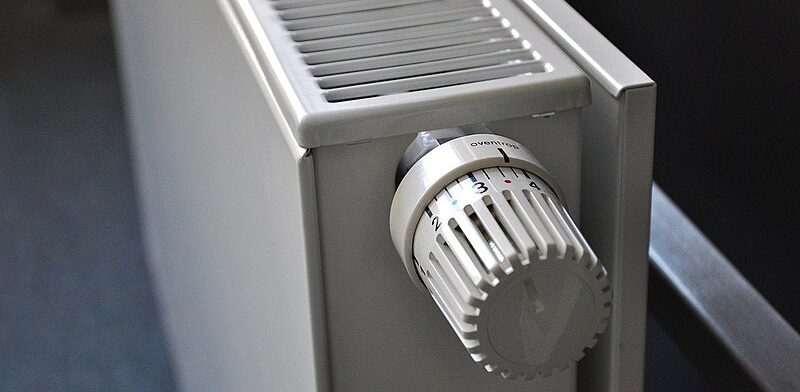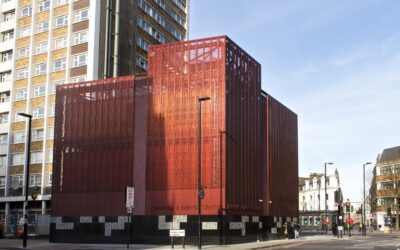
The emerging challenge of balancing weather dependent electricity production and variable demand is creating new demands on the energy system. Without adding extensive flexibility to the power system these issues will lead to a costly transition to a decarbonized energy system.
In the Flexi-Sync project, the need of balancing volatility in the energy system is met by increasing flexibility in district heating and cooling systems. The flexibility potential is identified by researchers and implemented by practitioners; energy service providers, district energy companies and housing companies. The project aims to identify how flexibility in district energy can be optimized and, thereby, contribute to the management of variable electricity production and demand.
Allowing greater temperature variations
Flexibility in district energy systems can be realised in many different ways and one of them is to allow for greater variations in indoor temperature. In the Flexi-Sync project one of the aims has been to understand what impact greater variation in indoor temperature of buildings can have on the comfort of occupants of such spaces. This understanding was gained through:
- a scholarly literature review,
- creating three plausible flexibility scenarios for residential buildings,
- collecting Swedish building residents’ opinions about these three scenarios through a survey, and
- through a stakeholder workshop in Austria
Understanding of the technology important, but difficult
The findings that were corroborated by previous findings show that there are more aspects than the range in which the temperature is allowed to vary that is important for the acceptance of varying indoor temperature. First, it is important that occupants understand the flexibility setup, but it is difficult to inform in an understandable and accessible way. When and where (e.g., in the bathroom or bedroom) the variation takes place is also important and, to complicate matters, people often have specific and individual preferences regarding heating. Pricing models that incentivize variation in indoor temperature could enhance the acceptance rate of minor comfort losses.
End-users want control, but don’t demand compensation
The survey also resulted in interesting indications to be confirmed or rejected in future studies. For example, the survey showed that the respondents prefer flexibility setups in which they have control over the flexibility range and are compensated economically for ranges larger than ±0.5°C (Scenario 3) over flexibility setups with the same variation and no control (Scenario 1) and larger variations without control (Scenario 2). But interestingly, some respondents showed a willingness to accept a deterioration of the heating service without any compensation. In the survey, younger residents (aged 18 to 34) showed the highest acceptance of a heating service deterioration without compensation. The survey respondents’ satisfaction with their current heating seemed to influence the extent to which they accepted higher variations in indoor temperature. Finally, the survey indicated that if you spend more time at home, you will have higher demands on thermal comfort.
This article has been written by Sara Renström (RISE), Burcu Ünlütürk (IVL Swedish Environmental Research Institute) and Anna Nilsson (IVL Swedish Environmental Research Institute). You can find more information about the project on flexisync.eu and in the Celsius Toolbox article “How to optimise district energy flexibility”
Webinar: Financial instruments and success cases
This webinar provided a European perspective on financial investment, from EU’s Urban Agenda Energy Transition Partnership to success cases and transparent green bonds to minimize the risks.
Smart integrated energy project joins the Celsius Initiative
The Horizon 2020 project FlexiGrid joins the Celsius Initiative, benefiting from the great network of integrated energy stakeholders.
Looking at Financing – success stories, challenges and solutions
During the May 2020 Celsius Talk will discuss the barriers cities encounter when looking to finance sustainable energy efficient projects, such as…
Bankability of urban excess heat recovery investments
We summarize some key points from RINA’s analysis of the bankability of urban excess heat recovery investments (from the H2020 Reuseheat project).
Gothenburg, a pioneer in green bonds
This article provides a short introduction to green bonds, using the first city in the world to use green bonds (Gothenburg) as an example.
Positive Energy Districts and Neighbourhoods Call for Proposals
Positive Energy Districts and Neighbourhoods may serve as a crucial contribution to achieve climate and energy targets. This call focuses on exchange of experience between ambitions and initiatives already going on.
European City Facility launches call for proposals
The European City Facility (EUCF) will launch its first call for proposals. All municipalities (local authorities) and their groupings from the EU-27 and UK are encouraged to apply to get support in developing an investment concept and accelerate the implementation of their energy and climate action plans.
IRENA’s Outlook Shows Path for Resilient Economies
The Global Renewables Outlook shows the path to create a sustainable future energy system. This flagship report highlights climate-safe investment options until 2050, the policy framework needed for the transition and the challenges faced by different regions.
Webinar: Low temperature district heating
Low temperature district heating can prove to be an important part in also keeping the globe’s temperature low. This webinar presents some of the opportunities and challenges cities may encounter in their endeavour towards a sustainable and efficient low temperature district heating systems.
Public Consultations for Spring and Summer 2020
In the upcoming weeks and months, a number of public consultations are scheduled with relevance for the Celsius cities. While we will reply to these…
Automated planning and design tool for DH networks
Speed up the planning process and build a solid business case with Comsof Heat, an automated planning and design tool for district heating…
Looking for best practices in efficient DHC
The Directorate-General for Energy of the European Commission (DG ENER) has awarded an ambitious study which will provide a thorough, in-depth…
Forerunner groups helping cities implement solutions
Cities face many difficulties in their ambition to cut carbon emissions through the optimisation of heating and cooling solutions. The challenges…
Bunhill 2 Energy Centre is now up and running!
Waste heat from the London Underground network is now capable of providing heating and hot water to more than 1,350 homes, a school and two leisure…
Sustainable reformation for a growing population
Better aware end-users, more heat-recycling and more biofuel, are required steps for Gothenburg to become a fossil-free city, especially with the…
Why should we waste freely available heat?
ReUseHeat offers free pre-feasibility studies on urban waste heat recovery!
A new era for heating in Croatia
Zagreb has started to install large-scale solar collectors as well as geothermal energy.
Celsius Summit 2019: Satisfy the energy needs in a sustainable way
The yearly conference of the Celsius Initiative took place in Brussels in October.


















